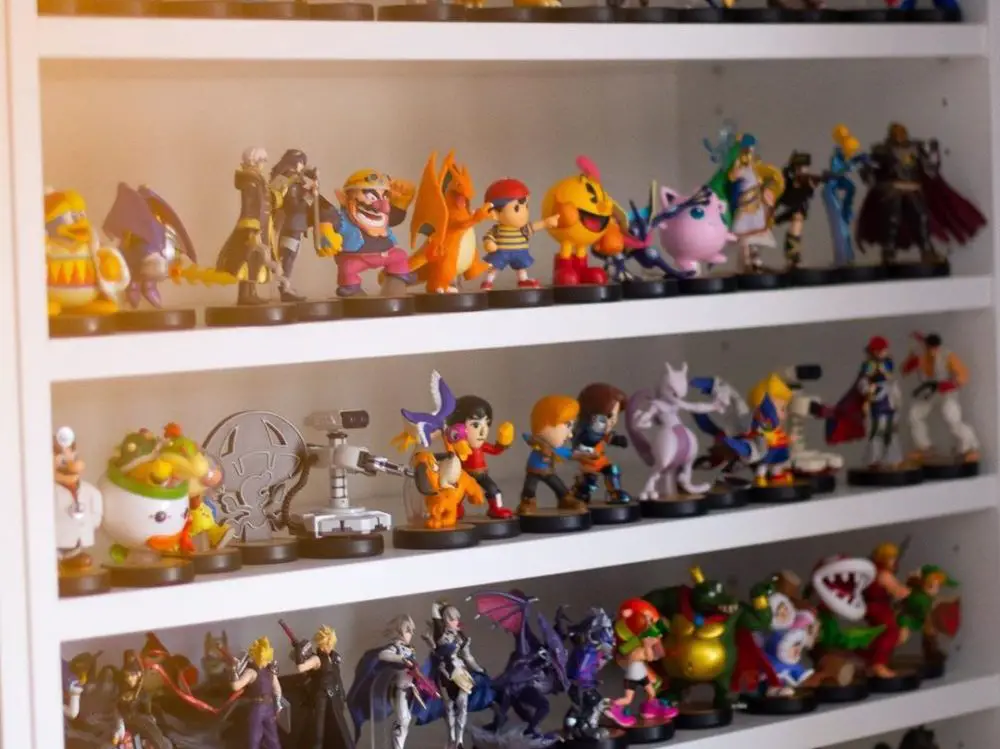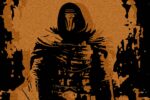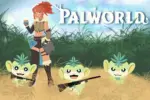Nintendo’s Amiibo figures once dominated the video game market. When the toys/collectibles were announced in 2014, they were one of the most profitable products in all of gaming. The figures, which take the shape of iconic video game characters like Mario, Sonic, Pac-Man and Pikachu, are highly detailed in addition to being well-constructed.
They aren’t meant to sit on a shelf, however; by allowing the figures to interact with a player’s Nintendo console, numerous in-game bonuses can be activated depending on the game and character.
The popularity of Amiibo was truly something to behold. The demand was high enough that, at one point, pre-orders and purchases crashed GameStop’s websites and in-store cash registers. The stress on online retailers to keep the figures in stock was immense, and Nintendo had to apologize several times to consumers for the shortages that retailers experienced.
However, the Amiibo craze has died down, and now the future of the collectibles is in question. Here are a few reasons why fans are concerned about the continuing production of Amiibo figures.
https://www.instagram.com/p/B42pxu_gJAX/
Missing in Major Releases
The first wave of Amiibo, designed for use in “Super Smash Bros. for the Nintendo 3DS / Wii U,” was released in November of 2014. This set included many of the characters from prior games in the series, like company mascot Mario, and some newer faces like Villager from “Animal Crossing” and the Wii Fit Trainer from “Wii Fit.”
For the next year, until Nov. 13, the rest of the base characters were released in waves. The final base characters to receive Amiibo were Falco from “Star Fox” and the Mii Fighters. So, over the course of only a year, players had the ability to purchase the figures for all of the characters in the basic game; in July 2017, every character, including the characters available for purchase after the launch of the game, had an Amiibo.
It’s safe to say that fans of the “Super Smash Bros.” series have been spoiled by the sheer amount of Amiibo that Nintendo has provided to coincide with their games. The 2018 sequel, “Super Smash Bros. Ultimate,” has also had Amiibo released to coincide with new characters, although these figures have come out slowly.
Three figurines came out with the base game in December 2018, and the Amiibo roster will be finalized in January 2020 with the release of Richter and Dark Samus, from “Castlevania” and “Metroid” respectively. “Ultimate” has had less characters added that require Amiibo, but they have come out over a longer period of time and more spread out. Still, for a game with such an enormous cast of playable characters, it’s nice to have individual figures for each one.
Other game franchises have not been so lucky. Even though “Pokémon” is the highest grossing media franchise of all time, there have been no Amiibo released specifically to support the series, despite the existence of over 800 Pokémon and multiple games that came out after Amiibo were announced.
The only Pokémon Amiibo that exist were created for the “Super Smash Bros.” series, outside of one Detective Pikachu figure released in conjunction with the side-series of the same name. One of Nintendo’s most anticipated titles of 2019, “Luigi’s Mansion 3,” released without a single Amiibo to support it despite its inclusion of the new adorable character Gooigi, who seemed like a perfect candidate for Amiibo inclusion.
SO WHILE training my Samus amiibo she decided to give me a big middle finger to my attack and therefore I think she's ready to beat people up xD pic.twitter.com/vnBgyqYmCh
— Undersoul (@UnderSouI) December 1, 2019
Nintendo’s enormous 2019 release lineup — including the aforementioned third release of “Luigi’s Mansion,” two new “Pokémon” titles, “Super Mario Maker 2” and “Fire Emblem: Three Houses” — was large and varied enough to make any gamer swoon, but only one non-Smash Bros. Amiibo has been released so far in 2019. That character was Link, from “The Legend of Zelda: Link’s Awakening.” The days of 2017 — when 28 non-Smash Bros. Amiibo were released — are now distant in the rearview mirror.
Limited Functionality
Amiibo for the “Super Smash Bros.” series create a proxy fighter in-game when scanned, coinciding with the scanned fighter. This computer-controlled player starts out weak and can barely play the game at all, but, through battling the Amiibo fighter, it’ll gain experience from watching you play. Eventually it’ll be strong enough to take on players of all skill levels, and it’ll learn ways to fight against its owner.
Then, after it’s trained, the figure itself can be carried around and the character “inside” of the toy will remain, allowing players to bring their experienced fighter wherever they go.
Outside of a few other standout moments, like using a Wolf Link Amiibo to gain him as a partner in “Breath of the Wild,” Amiibo don’t often reach the potential they have in “Super Smash Bros.” games. Some compatible titles on Nintendo systems, like “Bayonetta 2,” give characters new costumes or items based on the scanned Amiibo regardless of the series the figure came from; others only provide small boosts to in-game currency or expose a secret. It’s up to the player to decide if it’s worth paying real money for something that small.
Sometimes, Amiibo can’t be used in a game at all. In 2019, there were seven games total that supported Amiibo functionality, and even within those games, only certain character figures could be used. Some players might find that none of their figures have worked on games released in 2019.
Critical Concerns
One game that was deeply tied to its Amiibo support was the party game “Animal Crossing: Amiibo Festival,” which came out between major releases in the series and hoped to tide fans over. It played almost like Monopoly, in which the players moved around a path on a game board and hoped to avoid traps and pitfalls.
The game came with two figures of fan favorite characters and, by scanning those figures, those characters became playable. If more than two people want to play at once, they’d have to play as generic stand-in characters; that is, unless more Amiibo are purchased.
amiibo are actually a waste of money tbh
— yung slakesbot (@slakesbot) December 4, 2019
This tactic to promote purchasing was not received well, similarly to the game itself, and the value of Amiibo took a hit. As Hero TJ recalled on his Amiibo-focused podcast, the Animal Crossing Amiibo launch was “a complete commercial failure … they just decorated the shelves of stores for a long time, until they got discounted super cheap, and even still they had a hard time moving them.”
This misstep had fans and reviewers wondering what purpose Amiibo served in the long run if they were going to be used to generate money in such an obvious way.
The question of purpose is one that can only be solved if and when Nintendo decides to put its focus back on the figures. There are multiple big releases for Nintendo next year, including a new “Animal Crossing” and the sequel to the acclaimed “Breath of the Wild,” so fans will have to watch the news to see if there are more collectibles on the way.
















